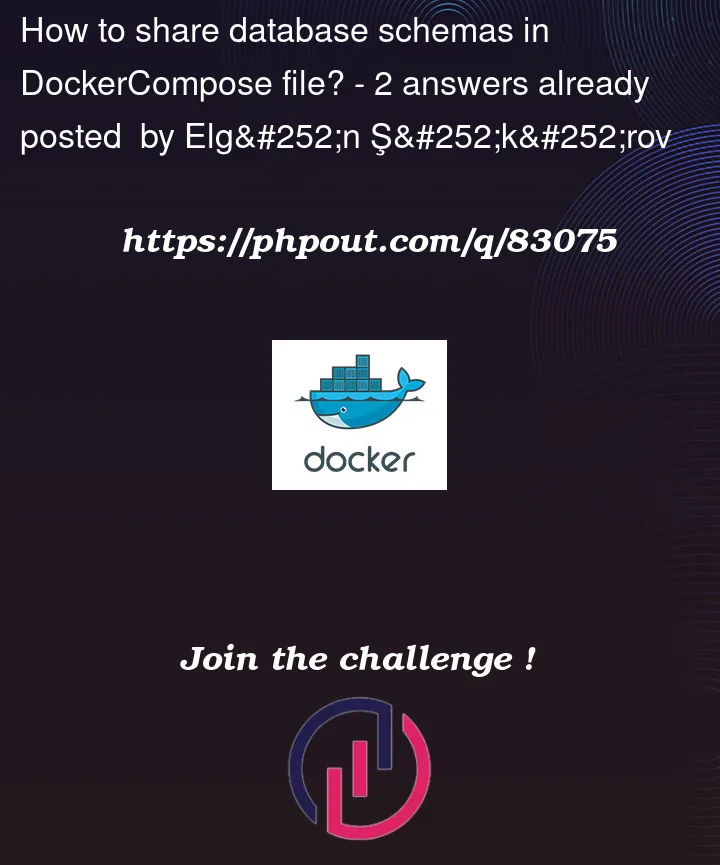I`m learning Docker. I build my image from Dockerfile in the counter app. And I am using mysql as a database. DockerCompose file is using one db and two container from the same app image. Mysql db has two different schemas. My goal is to use separate app services with different ports(e.g. 9000 and 9001), and they have own schemas. When I call localhost:9000/index it shows first counter and when I call localhost:9000/index it shows second counter.
But problem is that both of them use first schema, and so result being same counter. How can I isolate schemas?
Compose-file ->
version: '3.1'
services:
mysql:
image: mysql
restart: always
ports:
- "3306:3306"
environment:
MYSQL_ROOT_PASSWORD: password
volumes:
- mysql_data:/var/lib/mysql
hello-docker:
image: hello-docker:0.0.2
restart: always
environment:
DB_CONNECTION_IP: mysql
DB_SCHEMA_NAME: hello-counter
ports:
- "9000:9000"
volumes:
- mysql_data:/var/lib/mysql
hello-docker2:
image: hello-docker:0.0.2
restart: always
environment:
DB_CONNECTION_IP: mysql
DB_SCHEMA_NAME: hello_counter2
ports:
- "9001:9000"
volumes:
mysql_data:
application.yaml ->
spring:
datasource:
url: &connectionUrl jdbc:mysql://${DB_CONNECTION_IP:localhost}:${DB_CONNECTION_PORT:3306}/${DB_SCHEMA_NAME}?allowPublicKeyRetrieval=true&createDatabaseIfNotExist=true&useSSL=false&useJDBCCompliantTimezoneShift=true&useLegacyDatetimeCode=false&serverTimezone=UTC&zeroDateTimeBehavior=convertToNull&useUnicode=true&characterEncoding=UTF-8
username: root
password: password
driver-class-name: com.mysql.cj.jdbc.Driver
jpa:
hibernate.ddl-auto: validate
generate-ddl: true
show-sql: true
properties.hibernate.format_sql: true
server:
port: 9000




2
Answers
It is better having separate docker compose for each application and its database.
And if you want only one docker compose for both applications, you can define two separate services for mysql with different exposed schemas and ports and refer to each of them in your applications.
This would be same as your application that you have defined two services for it.
In addition here:
You referred to same application, It seems you mean:
localhost:9000/index
and
localhost:9001/index
The easiest way to accomplish this is to run a separate database per service. You can put these in a single Compose file if you’d like. (Or as @EskandarAbedini suggests in their answer you can run a separate Compose file per service, though this can get unwieldy if you have a significant stack based on largely the same code base.)
Note that both pairs of containers run the same images, but the MySQL containers have separated storage, and the application containers publish different host ports for the same container port. You’d have to separately run tasks like database migration for each container.
In principle nothing stops you from running multiple databases or schemata in a single MySQL container, provided you execute the correct SQL
CREATE DATABASEcall. You’d need a custom SQL init script to set this up; you couldn’t do it with just environment-variable configuration.